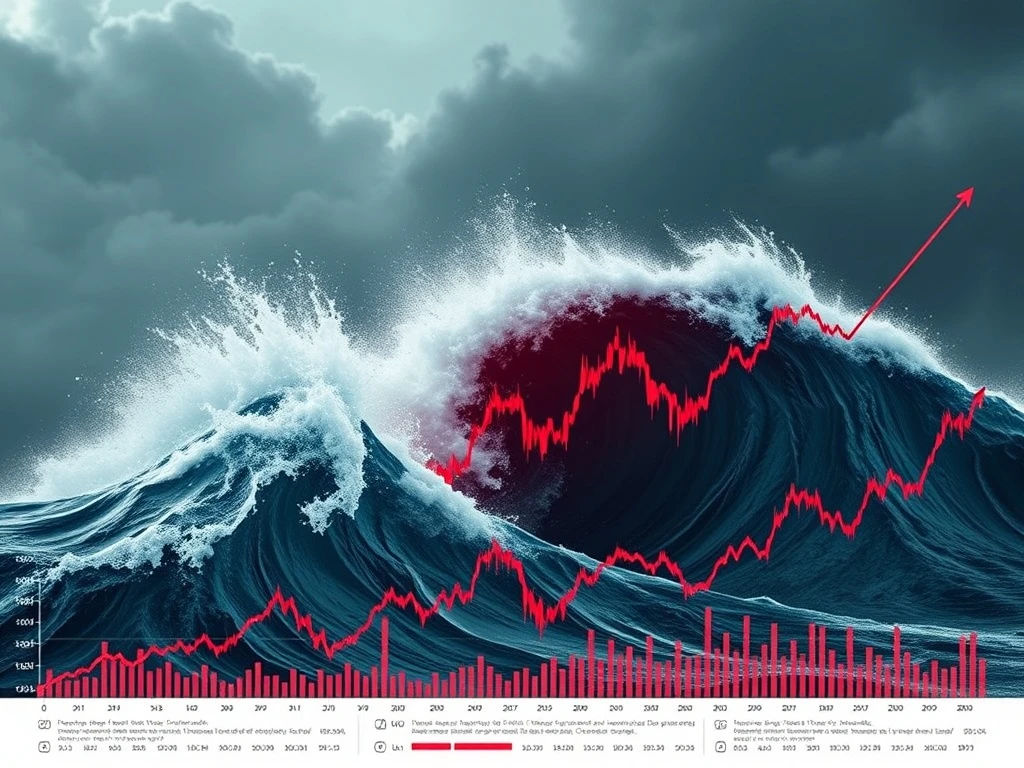Financial markets face an escalating bond market crisis that threatens to destabilize global stock markets. Consequently, investors must understand this critical situation. Moreover, rising bond yields create unprecedented challenges. Therefore, market participants need immediate awareness.
The Bond Market Crisis Explained
The current bond market crisis stems from several key factors. Firstly, central banks aggressively raised interest rates. Subsequently, bond prices collapsed dramatically. Additionally, inflation concerns persist stubbornly. Furthermore, geopolitical tensions exacerbate volatility. Ultimately, these conditions create perfect storm scenarios.
**Key drivers of the bond market crisis:**
• Rapid interest rate hikes
• Persistent inflation pressures
• Massive government debt issuance
• Reduced foreign demand for bonds
• Changing central bank policies
Impact on Stock Market Stability
The bond market crisis directly threatens stock market stability. Higher bond yields compete with equities. Consequently, investors demand better returns. Moreover, borrowing costs increase significantly. Businesses face higher financing expenses. Therefore, corporate profits face pressure. Stock valuations become less attractive.
**Transmission mechanisms to stocks:**
• Higher discount rates reduce equity valuations
• Increased corporate borrowing costs hurt profits
• Safe-haven flows from stocks to bonds
• Reduced consumer spending affects revenues
• Financial sector stress impacts overall markets
Expert Analysis and Projections
Leading strategists warn about bond market crisis consequences. Notably, bearish analysts predict significant stock declines. Furthermore, historical patterns support their concerns. Similarly, current data shows worrying trends. Importantly, the Federal Reserve faces difficult choices. Either they contain inflation or support markets.
**Critical warning signs include:**
• Inverted yield curve persistence
• Rising credit default spreads
• Declining market liquidity
• Increased volatility measures
• Foreign capital outflows
Investor Strategies and Protections
Investors can employ several protective strategies. Firstly, diversification remains crucial. Secondly, quality assets provide stability. Additionally, defensive sectors offer protection. Moreover, cash positions create flexibility. Furthermore, professional advice proves valuable. Ultimately, risk management determines success.
**Recommended protective measures:**
• Increase cash reserves
• Focus on quality dividend stocks
• Consider Treasury inflation-protected securities
• Maintain international diversification
• Implement disciplined rebalancing
Market Outlook and Recovery Scenarios
The bond market crisis resolution remains uncertain. However, several scenarios could unfold. Either inflation moderates quickly or rates stay higher longer. Meanwhile, economic growth may slow. Consequently, corporate earnings might decline. Therefore, stock markets face headwinds. Nevertheless, long-term opportunities exist.
**Potential resolution pathways:**
• Soft landing with controlled inflation
• Hard landing with recession
• Stagflation scenario
• Policy error consequences
• Gradual market adaptation
Frequently Asked Questions
What exactly constitutes a bond market crisis?
A bond market crisis occurs when rising yields and falling prices create systemic stress, reducing liquidity and increasing borrowing costs throughout the financial system.
How long might this bond market crisis last?
Most analysts expect the crisis to persist until inflation clearly moderates and central banks signal policy changes, potentially lasting several quarters.
Which sectors get hit hardest during bond market crises?
Technology growth stocks and interest-sensitive sectors like real estate typically suffer most during bond market turmoil due to valuation pressures.
Can the bond market crisis create buying opportunities?
Yes, quality companies with strong balance sheets often become undervalued during market dislocations, creating potential long-term opportunities.
How should retirement investors respond to this situation?
Retirement investors should maintain diversified portfolios, avoid emotional decisions, and consider consulting financial advisors about appropriate asset allocation.
What indicators should investors watch most closely?
Key indicators include inflation reports, Federal Reserve communications, yield curve movements, and credit spread changes for early warning signals.








